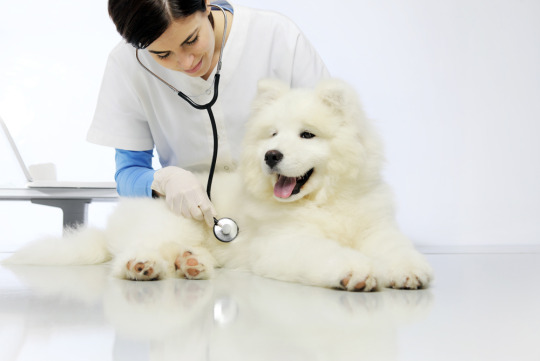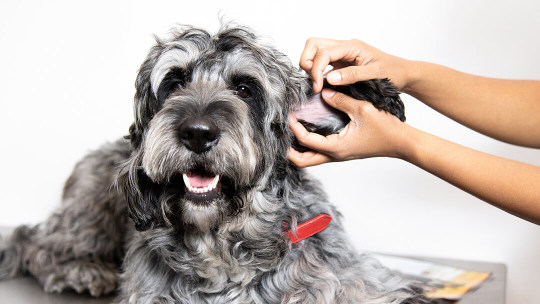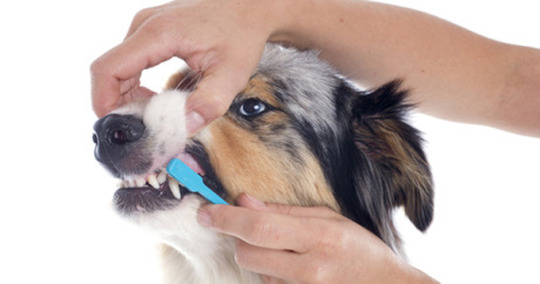#parvovirus treatment
Text
7 things every pet owner needs to know about the deadly Parvovirus
New Post has been published on https://petn.ws/X9zNR
7 things every pet owner needs to know about the deadly Parvovirus

6 Tips To Walk 10,000 Steps A Day 7Walking 10,000 steps a day has several health and fitness benefits. Those who have a busy schedule may find it difficult to achieve this goal every day. However, one does not necessarily have to hit the treadmill or take time out of their busy routine to walk […]
See full article at https://petn.ws/X9zNR
#DogNews #Parvovirus, #ParvovirusInDogs, #ParvovirusTreatment, #Pet, #Puppy
1 note
·
View note
Text
Tiny Pup One of the First Dogs to Get New Medical Treatment for Parvo
0 notes
Text
Canine Fecal Transplants: Fecal Transplant Saves A Puppy Dying from Parvo: Felix's Story
Fecal microbiota transplantation (FTM) treatment is a potentially game-changing addition to traditional supportive treatment for parvo.
There is some emerging evidence that this treatment can make a world of difference in the chance of survival for infected puppies.
Felix’s story
Felix, a sweet Yellow Lab puppy, fell ill shortly after his parents brought him home from a breeder. He was…

View On WordPress
0 notes
Text
for the last few days our ICU has been battling death over the soul of a small puppy very sick with parvovirus, and we’re all thinking wistfully of the recently announced parvo monoclonal antibody treatment, which no one actually has yet because final approval is still pending. depending on price point, that could be a real game changer.
21 notes
·
View notes
Text
10 Tips To A Healthier Dog

We all want our pups to live a long, happy, healthy life and there are things every dog parent can do to help make that happen. Here are 10 tips to help any dog feel happier and healthier.
1. Spay Or Neuter
Spaying stops a female dog from going into heat and can help prevent breast cancer and pyometra, or infection of the uterus. Neutering a male dog can mellow out aggressive behavior and help prevent testicular cancer, prostate disease, and hernias.
2. Vaccinate
By three months of age, the protective antibodies naturally passed along through a mother’s milk have been used up and your puppy needs to be vaccinated to help protect him or her against many common infectious diseases, including leptospirosis, distemper and parvovirus, as well as a rabies vaccination. Your vet may also recommend vaccinations for kennel cough and Lyme disease. Vaccinations will save your dog’s life.

3. Visit Your Vet
Like you, dogs need regular visits to the doctor to ensure good health. An annual health check gives your vet the chance to nip any illness or health concerns in the bud before they can cause big problems and bills. The vet will ask about your pet’s behavior, eating, and exercise habits, while checking your dog’s vital stats. Check at your local pet store for low-cost pet clinics that can help keep costs down.
4. Declare War On Fleas And Ticks
Fleas can cause health problems beyond itchy skin. They can be the source of allergies, anemia, and tapeworms. Fortunately there are a myriad of flea control products available, including Advantage and Frontline, two of the most popular. Monthly applications should be given based on the weight of your dog. Keep in mind when you are gearing up for your flea wars you must treat all your pets, not just the ones where fleas are obvious.
You especially have to be vigilant in warmer months and with global warming those warmer months seem to last longer and longer, which means you may need to extend those summer treatments.
5. Treat Heartworm By Preventing It
Heartworm is very difficult to treat and can be fatal for your dog so prevention is the key. Giving your dog one dose monthly of a tablet, like Heartguard, can stop heartworm before it starts.

6. Exercise Your Dog Every Day
And not just a quick jaunt around the block. Exercise through walking and playing with your dog will keep your little buddy physically fit, mentally healthy, and reduce the chance of belligerent and destructive behavior as well. Regular exercise also helps your dog maintain a healthy weight and heart, while increasing muscle mass. Your dog’s exercise requirements will be different depending on breed, sex, age, and health.
7. Watch Your Dog’s Weight
Lack of exercise and overfeeding is as much a problem in pets as it is in people. Your dog cannot decide how much exercise he or she needs or what kind of food is best to eat; only you can do that. Arthritis, liver disease, and coronary disease are just a few of the health issues facing an overweight dog. To help your dog lose weight, your vet may recommend a mix of exercise and switching to a low-calorie brand of food, or gradually reducing the amount of regular food you feed your dog. If your pup is overweight talk to your vet to figure out the best course of action.

8. Weekly Health Checks
One of the best ways to prevent health issues is to check up on your dog weekly. First, inspect your dog’s coat and skin for swelling, flakes or scabs. Then look into your dog’s ears and eyes for any signs of redness or discharge. Finally watch for any changes in eating or drinking habits. If anything differs from what’s normal for your dog, consult your vet.
9. Stay Away From Dangerous Foods
The ASPCA Animal Poison Control Center compiled a list of foods that could be dangerous, even poisonous for your dog: alcoholic beverages, chocolate, avocado, coffee, fatty foods, macadamia nuts, spoiled or moldy foods, onions and onion powder, grapes and raisins, salt, garlic, yeast dough, and products sweetened with xylitol. Post this list and be sure your family and any caregivers are aware of it.

10. Brush Those Teeth!
Bad breath can be a sign of teeth or gum problems. Particles of food, saliva, and bacteria known as plaque can build up on the gums and teeth and cause infection. If you don’t treat this, infection can result in tooth decay and even move into the bloodstream and affect your pet’s heart, lungs, liver, kidneys, bones, and joints. Inspect teeth and gums weekly, and check with your vet for instructions on regular brushing with canine toothpaste.
9 notes
·
View notes
Text
Hello all!! I rlly hate to make this post, but our ESA just tested positive for parvovirus and while we (thankfully) caught it early, it was a lot of money out of pocket to afford treatment. We have less than $600 USD to our name and are set to start college next month. We will be living on campus in order to escape an abusive household, but we're severely short on money. We are searching for a part-time job to help us cover the funds gap, but until then, we do sell adoptables and commissions over on Ko-Fi. If you're interested in supporting a queer, disabled artist and are in the market for art or cheap tarot readings, consider checking us out <3 reblogs are very much appreciated
💌 comms info 💌
💘 ko-fi 💘

#important#actuallycptsd#actuallydid#actually traumatized#transgender#signal boost#mutual aid#commsions#commssions open#drawing comms#tarot commissions#tarot reading
2 notes
·
View notes
Text
https://www.businesswire.com/news/home/20230427005591/en/Elanco-Announces-Breakthrough-Treatment-for-Deadly-Canine-Parvovirus
2 notes
·
View notes
Text
Aplastic Anemia | Causes, Symptoms, Diagnosis and Treatments

Aplastic anemia (AA) is the syndrome of chronic primary hematopoietic failure caused by injury, which results in decreased or absent hematopoietic precursors in the bone marrow and accompanying pancytopenia.
Aplastic anemia is classified as either moderate, severe (SAA), or very severe (vSAA).
Three primary mechanisms can result in the development of AA: –
1. Direct injury.
2. Immune-mediated.
3. Inherited or acquired bone marrow failure.
Usually, AA is idiopathic, however, it can be attributable to: –
- Radiation.
- Toxic chemicals (like Benzene, solvents, and glue vapors).
- Cytotoxic drugs (chloramphenicol, gold).
- Immune-related disorders (Eosinophilic fasciitis, SLE, Graft versus host disease).
- Thymoma.
- Viral infections (Epstein-Virus Infection, Parvovirus B19, Human immunodeficiency virus (HIV), and Hepatitis virus).
- Anorexia nervosa and paroxysmal nocturnal hemoglobinuria (PNH).
Patients typically present with non-specific symptoms caused by associated cytopenia, such as: –
- Low energy levels, pallor, and headaches with anemia.
- Mucosal bleeding.
- Bruising/petechiae.
- Menorrhagia with thrombocytopenia.
- Fever with or without evidence of infection with neutropenia.
The most common complications of aplastic anemia are bleeding, infections, and transformation to lymphoproliferative disorders.
Aplastic anemia has the following diagnostic criteria: –
The presence of bone marrow hypocellularity and two or more cytopenias (reticulopodia less than 1% or less than 40,000/microliter, neutropenia less than 500/microliter, or thrombocytopenia less than 20,000/microliter).
The bone marrow cellularity in moderate disease is less than 30%.
The severe disease has less than 25% cellularity or less than 50% cellularity with fewer than 30% hematopoietic cells.
Very severe meets the severe criteria in addition to neutropenia less than 200/µL.
Aplastic anemia treatment focuses on the underlying cause.
If possible, remove the offending agent(s).
Treatment is dependent on the patient’s age, disease severity, donor availability, and performance status when there is no distinctive reversible cause.
Young patients (less than 50 years old) with severe disease who are in good health should receive an allogeneic hematopoietic cell transplant (HCT) before starting immunosuppressive therapy.
Older patients (50 years and older) in good health, as well as young patients without an HCT donor, are given full-dose immunosuppressive therapy using: –
- Eltrombopag.
- Horse/rabbit anti-thymocyte globulin (ATG).
- Cyclosporine A.
- Prednisone.
Read more at: https://medicaregate.com/aplastic-anemia-causes-symptoms-diagnosis-and-treatments/
2 notes
·
View notes
Text
Your Comprehensive Guide to Finding a Trusted Dog Veterinary Clinic Nearby
Introduction:
As devoted pet owners, the well-being of our canine companions is of utmost importance. Whether it's for routine check-ups or emergency care, having access to a reliable veterinary clinic nearby is essential. In this guide, we'll delve into the significance of finding a trustworthy dog veterinary near me and provide valuable insights to help you make an informed decision for your furry friend's health.
The Importance of Veterinary Care for Dogs:
Similar to humans, dogs require regular medical attention to maintain their health and prevent potential illnesses. Veterinary care encompasses a wide range of services aimed at keeping dogs healthy and addressing any health issues they may encounter. From vaccinations and preventive care to diagnostic testing and treatment, veterinary professionals play a crucial role in ensuring our canine companions lead happy and healthy lives.
Key Services Offered by Dog Veterinarians:
Dog veterinarians offer a variety of services to meet the diverse needs of their patients. These services include:
1. Wellness Exams: Routine check-ups allow veterinarians to assess your dog's overall health and detect any potential issues early on.
2. Vaccinations: Essential vaccinations protect dogs from common diseases such as rabies, distemper, and parvovirus.
3. Preventive Care: Veterinarians provide preventive measures such as parasite control, dental care, and nutrition counseling to promote optimal health.
4. Diagnostic Testing: Advanced diagnostic tests such as blood work, X-rays, and ultrasounds help veterinarians diagnose and treat medical conditions accurately.
5. Surgical Procedures: Veterinary clinics are equipped to perform various surgical procedures, including spaying, neutering, and soft tissue surgeries.
6. Emergency Care: In emergencies, prompt medical attention is crucial. Many veterinary clinics offer 24/7 emergency services to ensure dogs receive the care they need when they need it most.
Tips for Finding the Best Dog Veterinary Clinic Nearby:
When searching for a dog veterinary clinic nearby, consider the following tips to ensure you find the best care for your furry friend:
1. Location: Look for veterinary clinics conveniently located near your home or workplace for easy accessibility, especially during emergencies.
2. Reputation: Research online reviews and ask for recommendations from trusted sources to gauge the clinic's reputation.
3. Credentials and Experience: Choose a veterinary clinic staffed with licensed and experienced veterinarians who have a proven track record of providing excellent care.
4. Services Offered: Ensure the veterinary clinic offers a comprehensive range of services to meet your dog's needs, from routine exams to emergency care.
5. Facility and Equipment: Visit the clinic in person to assess the cleanliness, organization, and availability of modern equipment and facilities.
6. Communication and Compassion: Select veterinarians who prioritize clear communication, actively listen to your concerns, and demonstrate compassion towards your pet.
The Impact of Veterinary Care on Dog Health:
Regular veterinary care is essential for maintaining your dog's health and well-being. By scheduling routine check-ups and staying proactive about preventive care, you can help prevent potential health issues and address any concerns early on. Veterinary professionals serve as valuable partners in your dog's healthcare journey, providing expert guidance, support, and medical care to ensure they lead long and healthy lives.
Conclusion:
Finding the best dog veterinary clinic nearby is crucial for ensuring your furry friend receives the highest quality care. By considering factors such as location, reputation, credentials, and services offered, you can select a veterinary clinic that meets your dog's needs and provides you with peace of mind as a pet owner. Remember, regular veterinary care is key to ensuring your dog remains healthy, happy, and thriving for years to come.
0 notes
Text
Get your dog a free parvo vaccine at this drive-thru clinic - Indianapolis News | Indiana Weather | Indiana Traffic
New Post has been published on https://petn.ws/Wptut
Get your dog a free parvo vaccine at this drive-thru clinic - Indianapolis News | Indiana Weather | Indiana Traffic
(MIRROR INDY) — Canine parvovirus, or parvo, is a highly contagious and potentially lethal virus that affects dogs. Robin Herman, co-founder of Indy’s Parvo Prevention Project, said there is not a cure for parvo and treatment is expensive. “They need to be constantly on fluids with IVs, need anti-nausea medication, and they need supervision,” Herman […]
See full article at https://petn.ws/Wptut
#DogNews
0 notes
Text
Diving Deep into Dog Medicine: Insights and Perspectives

In the realm of veterinary care, the intersection of science and compassion converges to ensure the well-being of our beloved companions. Among the vast array of veterinary specialties, dog medicine holds a pivotal position, offering insights into the intricate health needs of our canine friends. From preventive care to advanced treatments, understanding the nuances of dog medicine provides invaluable perspectives for both pet owners and veterinary professionals alike.
Exploring Preventive Care:
Preventive medicine forms the cornerstone of canine healthcare, emphasizing the importance of vaccinations, regular check-ups, and proper nutrition. Vaccinations protect dogs from debilitating diseases such as rabies, parvovirus, and distemper, safeguarding their health and preventing the spread of contagious illnesses. Regular wellness exams enable veterinarians to detect early signs of potential health issues, allowing for prompt intervention and treatment. Moreover, maintaining a balanced diet tailored to the nutritional needs of dogs ensures optimal health and longevity, underscoring the significance of preventive care in dog medicine.
Managing Chronic Conditions:
Just like humans, dogs may encounter chronic conditions that require ongoing management and treatment. From arthritis and diabetes to allergies and thyroid disorders, navigating these health challenges necessitates a multifaceted approach rooted in evidence-based medicine. Veterinary professionals utilize a combination of medications, dietary modifications, and lifestyle adjustments to alleviate symptoms and improve the quality of life for dogs with chronic conditions. Through diligent monitoring and tailored interventions, dog medicine strives to empower dogs to live fulfilling lives despite their health challenges.
Embracing Technological Advancements:
The landscape of dog medicine is continually evolving, propelled by technological advancements that enhance diagnostic capabilities and treatment modalities. Cutting-edge imaging techniques, such as MRI and CT scans, provide detailed insights into canine anatomy, facilitating accurate diagnoses and treatment planning. Similarly, advancements in surgical procedures, including minimally invasive techniques and laser surgery, minimize trauma and promote faster recovery times for dogs undergoing procedures. Harnessing the power of technology enables veterinary professionals to deliver high-quality care while prioritizing the comfort and well-being of their canine patients.
Click here to know more : -
Addressing Behavioral Health:
In addition to physical health, dog medicine acknowledges the importance of addressing behavioral health to ensure holistic well-being. Behavioral issues, such as anxiety, aggression, and compulsive behaviors, can significantly impact a dog's quality of life and strain the bond between pets and their owners. Veterinary behaviorists specialize in identifying underlying triggers and implementing behavior modification strategies to address these challenges effectively. By integrating behavioral health considerations into comprehensive treatment plans, dog medicine endeavors to nurture harmonious relationships between dogs and their human companions.
Navigating Emergency Care:
Emergencies can arise unexpectedly, underscoring the need for prompt and effective emergency care in dog medicine. From traumatic injuries and toxic ingestions to sudden illnesses and heatstroke, rapid intervention can mean the difference between life and death for dogs in distress. Veterinary emergency clinics equipped with state-of-the-art facilities and skilled professionals play a vital role in providing critical care during these critical moments. Timely interventions, including fluid therapy, pain management, and surgical interventions, are essential in stabilizing dogs and facilitating their recovery from emergency situations.
Fostering Collaborative Care:
The field of dog medicine thrives on collaboration among veterinary professionals, pet owners, and other stakeholders invested in the well-being of dogs. Effective communication and partnership between veterinarians and pet owners form the cornerstone of successful treatment outcomes, ensuring that dogs receive comprehensive care tailored to their individual needs. Moreover, interdisciplinary collaborations between veterinary specialists, such as internal medicine, surgery, and oncology, allow for holistic approaches to complex health issues, maximizing the chances of successful outcomes for dogs facing challenging diagnoses.
Conclusion:
Dog medicine encompasses a diverse array of disciplines and approaches aimed at promoting the health and well-being of our canine companions. From preventive care and chronic disease management to emergency interventions and behavioral health considerations, the field of dog medicine offers invaluable insights and perspectives for pet owners and veterinary professionals alike. By embracing advancements in technology, fostering collaborative care, and prioritizing the holistic needs of dogs, dog medicine continues to evolve, ensuring that our beloved companions receive the highest standard of care possible.
Read more : - Punganur Cow: A Jewel in Andhra's Agricultural Crown
0 notes
Text
Learn About Veterinary Rapid Test Kits
Introduction
In the ever-evolving landscape of veterinary medicine, technological advancements continue to play a pivotal role in enhancing diagnostics and ensuring the health and well-being of animals. One such innovation that has gained prominence is the Veterinary Rapid Test Kit. These kits have revolutionized the way veterinarians diagnose and monitor various health conditions in animals swiftly and efficiently.
What is Veterinary Rapid Test Kits?
Veterinary Rapid Test Kits are diagnostic tools designed to provide quick and accurate results for various diseases and health parameters in animals. These kits are user-friendly, cost-effective, and serve as an invaluable resource for veterinarians, enabling them to make timely and informed decisions regarding the health of their patients.
Veterinary Rapid Test Kit
Features of Veterinary Rapid Test Kits
Rapid Results:
One of the most significant features of these kits is their ability to deliver quick results. Traditional diagnostic methods might take days to provide conclusive information, but Veterinary Rapid Test Kits can offer results within minutes. This rapid turnaround time is critical in initiating prompt treatment and preventing the spread of contagious diseases.
User-Friendly:
Veterinary Rapid Test Kits are designed to be user-friendly, making them accessible to a wide range of veterinary professionals. The simplicity of these kits allows veterinarians, laboratory technicians, and even farmers to use them with minimal training, facilitating on-site testing in various settings.
Cost-Effective:
Traditional laboratory testing can be expensive and time-consuming. Veterinary Rapid Test Kits offer a cost-effective alternative by reducing the need for specialized equipment and lengthy laboratory processes. This affordability makes them an attractive option for routine screenings and point-of-care diagnostics.
Portability:
The compact nature of these kits enhances their portability, allowing veterinarians to carry them in the field for on-site testing. This feature is particularly beneficial in remote areas where access to advanced laboratory facilities may be limited.
Types of Veterinary Rapid Test Kits
Infectious Disease Detection Kits:
These kits are designed to identify various infectious diseases affecting animals, including viral and bacterial infections. Examples include kits for detecting diseases such as parvovirus in dogs, feline leukemia virus in cats, and avian influenza in birds.
Hormone Detection Kits:
Veterinary Rapid Test Kits are also available for measuring hormone levels in animals. These kits are commonly used in reproductive health management, allowing veterinarians to assess the reproductive status of animals and optimize breeding programs.
Drug Residue Detection Kits:
For animals involved in food production, such as dairy or meat animals, there are Veterinary Rapid Test Kits specifically designed to detect drug residues. These kits ensure that animal products entering the food supply meet safety standards.
Working Principle of Veterinary Rapid Test Kits
The working principle of Veterinary Rapid Test Kits typically involves immunochromatography or lateral flow technology. These tests rely on the interaction between antigens and antibodies to produce visible results. Here's a simplified explanation of the process:
Sample Application:
A small sample, such as blood, urine, or saliva, is applied to the designated area on the test kit.
Migration of Components:
The sample interacts with pre-coated antibodies, causing the formation of antigen-antibody complexes. These complexes migrate along the test strip through capillary action.
Test Line Reaction:
The test strip contains a test line with immobilized antibodies specific to the target analyte. If the analyte is present in the sample, it binds to the antibodies on the test line, creating a visible line.
Control Line:
A control line, which contains antibodies that bind to excess labeled antibodies, serves as a procedural control. Its appearance ensures the validity of the test.
Conclusion
Veterinary Rapid Test Kits have emerged as indispensable tools in the field of veterinary medicine, offering speed, simplicity, and affordability in diagnostics. Their diverse applications, ranging from infectious disease detection to hormone analysis and drug residue testing, make them versatile assets for veterinarians worldwide. As technology continues to advance, these kits will likely play an even more significant role in safeguarding animal health and improving overall veterinary care.
As a professional veterinary rapid testing kit manufacturer, MongGo is committed to protecting animal health and providing you with highly sensitive veterinary rapid testing kits.
1 note
·
View note
Text
Dog parvovirus symptoms and treatment
Introduction
Parvovirus, in the world of responsible pet ownership, staying informed about potential health threats to our furry companions is paramount. One such menace that looms over our canine friends is the dreaded parvo virus. In this blog post we will study about some baiscs or can sayb massive intricates on web of parvo virus symptoms and treatment, ensuring you’re equipped with the…

View On WordPress
0 notes
Text
The American Bully: Your Ultimate Guide to Care, Origins, and More
Origins and General Information:
Discover the captivating history of the American Bully, a breed that emerged in the late 20th century through selective breeding of American Pit Bull Terriers and American Staffordshire Terriers. Developed for a gentle disposition and a muscular appearance, these dogs are distinguished by their stocky build, broad head, and powerful stance.

How to Care for an American Bully:
Food: Ensure your American Bully thrives with high-quality, size-specific dog food. Explore options with joint support for optimal musculoskeletal health, and consult with your vet for a personalized diet plan based on age and activity level.
Environment: While adaptable to various living conditions, your American Bully will thrive in a secure, fenced yard. Provide a cozy resting place, like a comfortable dog bed, and ensure access to clean water at all times.
Care Method: Satisfy their need for companionship by spending quality time together. Engage in interactive play and provide mental stimulation through puzzle toys.
Grooming: Maintain their coat by regularly brushing away loose hair. Bathe them as needed and keep a close eye on their ears, eyes, and teeth for signs of infection.
Preparing for an American Bully’s Life:
Three Short Advice Sentences:
Start consistent training and socialization from a young age.
Foster their affectionate nature with a safe and loving environment.
Ensure regular exercise to keep them mentally and physically fit.
Essential Equipment:
Equip yourself with a collar and leash, high-quality dog food and bowls, toys for mental stimulation, and a crate or comfortable bedding for rest.
Common Diseases:
Hip Dysplasia: Maintain a healthy weight and consider joint supplements.
Skin Allergies: Monitor for issues and consult with a vet for treatment.
Heartworm Disease: Keep them on a regular prevention regimen.
Necessary Vaccines:
Ensure your American Bully is protected with core vaccines, including Rabies, distemper, and parvovirus. Consult with your vet for location-specific vaccine needs.
Common Names for American Bullies:
Choose a name that reflects their personality and is easy to pronounce. Common names include Max, Bella, Rocky, Daisy, and Zeus.
Buying/Adopting an American Bully:
Locations of Popularity: American Bullies are popular in the United States and internationally.
Average Price: Puppy prices vary, ranging from $1,000 to $5,000 or more based on pedigree and breeder reputation.
Community for Adoption: Explore American Bully rescue groups on social media and check local shelters for potential adoption.
Before Adoption/Purchase: Research and choose a reputable breeder or rescue group. Request health records, verify vaccinations, and visit the dog in person.
Rescue Groups: Consider organizations like the American Bully Kennel Club (ABKC) Rescue and local groups. Ensure the dog's health is checked before adoption.
In conclusion, the American Bully, with its affectionate nature and impressive physique, can be a loving family pet with proper care and understanding. Whether considering adoption or already a proud owner, meeting their needs ensures a happy and healthy life together.
0 notes
Text
The American Bully: A Comprehensive Guide to Care, Origins, and More
Origins and General Information:
The American Bully, a captivating breed with a rich history, originated in the late 20th century by selectively breeding American Pit Bull Terriers and American Staffordshire Terriers. Developed for a gentle disposition and muscular appearance, American Bullies are recognized for their stocky build, broad head, and powerful stance.

How to Care for an American Bully:
Food: American Bullies benefit from high-quality, size-specific dog food. Consider options with joint support for optimal musculoskeletal health. Consult with your vet for a personalized diet plan based on age and activity level.
Environment: While adaptable to various living conditions, an American Bully thrives in a secure, fenced yard. Provide a comfortable resting place, such as a dog bed, and ensure access to clean water at all times.
Care Method: Satisfy their need for companionship by spending quality time together. Engage in interactive play and provide mental stimulation through puzzle toys.
Grooming: Regularly brush their short coat to remove loose hair. Bathe them as needed and check ears, eyes, and teeth regularly for signs of infection.
Preparing for an American Bully’s Life:
Three Short Advice Sentences:
Consistent training and socialization are crucial from a young age.
Foster their affectionate nature with a safe and loving environment.
Ensure regular exercise to keep them mentally and physically fit.
Essential Equipment:
Collar and leash, high-quality dog food and bowls, toys for mental stimulation, and a crate or comfortable bedding for rest.
Common Diseases:
Hip Dysplasia: Maintain a healthy weight and consider joint supplements.
Skin Allergies: Monitor for issues and consult with a vet for treatment.
Heartworm Disease: Keep them on a regular prevention regimen.
Necessary Vaccines:
Core vaccines include Rabies, distemper, and parvovirus. Consult with your vet for location-specific vaccine needs.
Common Names for American Bullies:
Choose a name that reflects their personality and is easy to pronounce. Common names include Max, Bella, Rocky, Daisy, and Zeus.
Buying/Adopting an American Bully:
Locations of Popularity: American Bullies are popular in the United States and internationally.
Average Price: Puppy prices vary, ranging from $1,000 to $5,000 or more based on pedigree and breeder reputation.
Community for Adoption: Look for American Bully rescue groups on social media and check local shelters.
Before Adoption/Purchase: Research and choose a reputable breeder or rescue group. Request health records, verify vaccinations, and visit the dog in person.
Rescue Groups: Consider organizations like the American Bully Kennel Club (ABKC) Rescue and local groups. Ensure the dog's health is checked before adoption.
In conclusion, the American Bully, with its affectionate nature and impressive physique, can be a loving family pet with proper care and understanding. Whether considering adoption or already a proud owner, meeting their needs ensures a happy and healthy life together.
0 notes